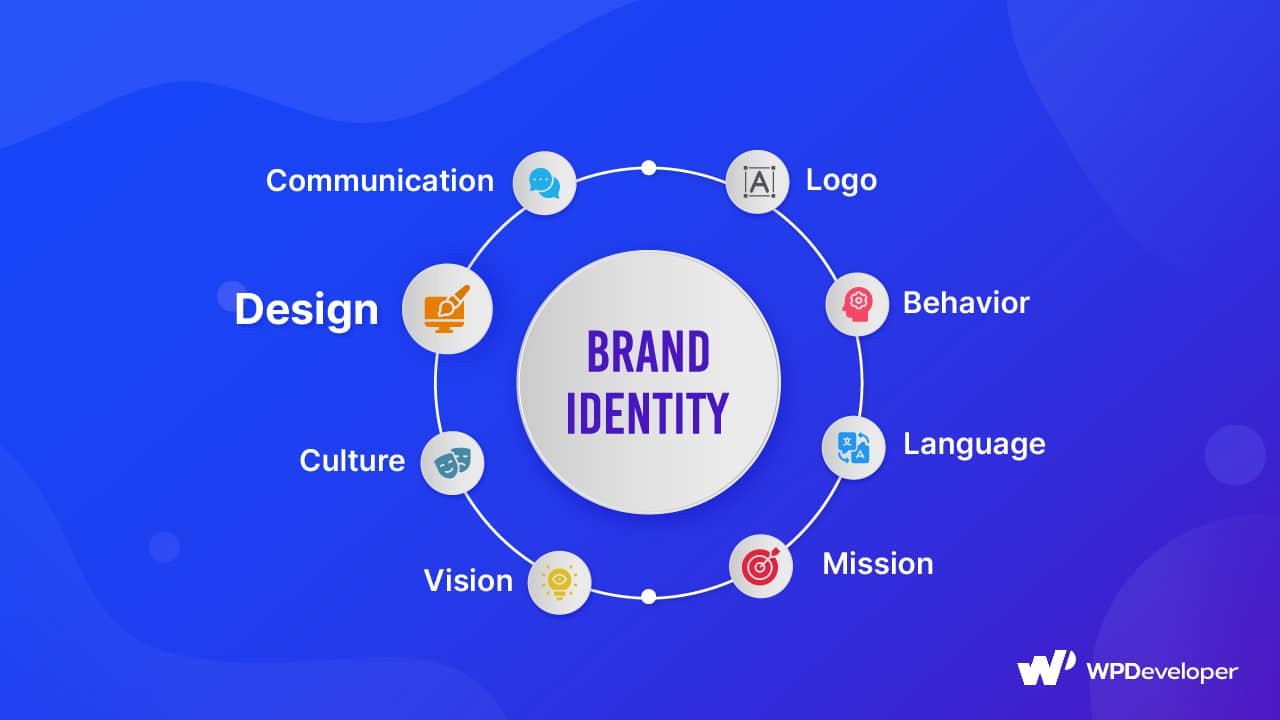
In a world saturated with brands, establishing a strong brand identity is essential for standing out and building lasting relationships with your audience. A well-crafted brand identity not only conveys who you are as a business but also influences how customers perceive and interact with your brand. Here are five key elements that are crucial for effective brand identity design.

1. Logo Design
Your logo is often the first point of contact for customers and serves as the visual representation of your brand. A successful logo is memorable, versatile, and timeless. It should reflect your brand’s personality and values, making a strong impression while remaining simple enough to be easily recognizable.
Tips for Effective Logo Design:
- Keep it Simple: Avoid overly complex designs that can confuse or distract.
- Make it Relevant: Ensure the logo aligns with your industry and target audience.
- Ensure Versatility: Design a logo that works across various mediums and sizes, from business cards to billboards.
2. Color Palette
Colors evoke emotions and play a significant role in brand perception. An effective color palette can enhance brand recognition and convey your brand’s personality. Different colors can evoke different feelings; for example, blue often represents trust and professionalism, while red can convey excitement and energy.
Tips for Choosing a Color Palette:
- Limit Your Colors: Choose a primary color and one or two accent colors to maintain consistency.
- Consider Color Psychology: Research the emotions associated with different colors and choose ones that align with your brand values.
- Test for Versatility: Ensure your color palette works well in both digital and print formats.
3. Typography
Typography is a crucial aspect of brand identity that goes beyond just choosing a font. The fonts you use can influence how your message is perceived and contribute to your overall brand personality. Effective typography enhances readability and helps convey your brand’s voice.
Tips for Effective Typography:
- Choose Readable Fonts: Ensure your fonts are legible across different sizes and platforms.
- Limit Font Variations: Use a limited number of fonts (typically two or three) to maintain consistency.
- Reflect Your Brand Personality: Choose fonts that resonate with your brand values and target audience, whether that’s modern, classic, playful, or serious.
4. Imagery and Graphics
The visuals you use—whether photos, illustrations, or icons—are vital for creating a cohesive brand identity. Consistent imagery helps reinforce your brand message and creates a recognizable style. The choice of imagery should resonate with your audience and support your brand story.
Tips for Effective Imagery:
- Maintain Consistency: Use a consistent style and tone for all images to strengthen brand recognition.
- Choose High-Quality Visuals: Ensure all images are high-resolution and reflect the professionalism of your brand.
- Align with Your Brand Story: Use imagery that resonates with your brand’s narrative and values, helping to create an emotional connection with your audience.
5. Brand Voice and Messaging
Your brand voice encompasses the tone and style of communication used in your marketing materials, social media, and customer interactions. A consistent brand voice helps create a cohesive experience for your audience, reinforcing your identity and values. Whether your voice is friendly, authoritative, playful, or professional, it should resonate with your target audience.
Tips for Establishing Brand Voice:
- Define Your Tone: Identify the tone that best represents your brand and use it consistently across all channels.
- Craft a Unique Messaging Framework: Develop key messages and taglines that communicate your brand’s values and mission.
- Engage with Your Audience: Tailor your messaging to connect with your audience, encouraging interaction and fostering loyalty.

